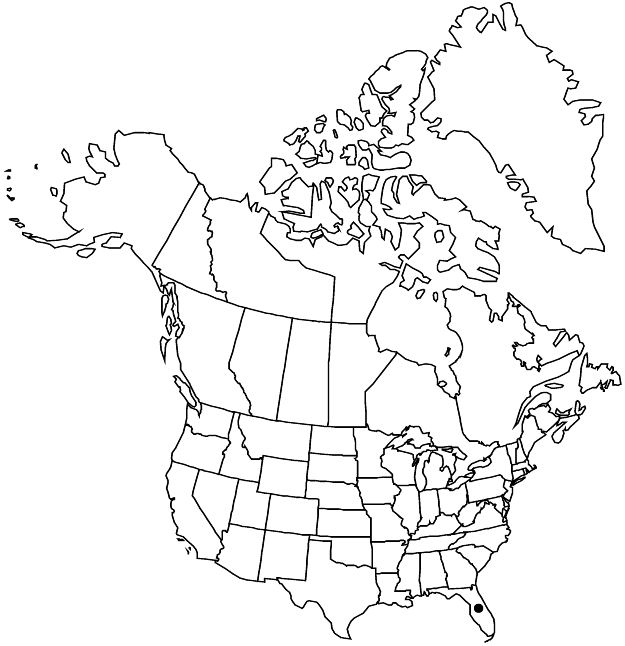Hypericum edisonianum
Rhodora 63: 15. 1961.
Shrubs, erect, sometimes unbranched proximal to inflorescence, 3–15 dm. Stems: internodes 4–6-lined at first, soon 2-lined. Leaf-blades elliptic, 15–26 × 5–8 (–11) mm, base not articulated, cuneate to subrounded, with glandlike auricles, margins subrecurved to subincrassate, apex obtuse to acute, midrib with to 4 pairs of branches. Inflorescences 1-flowered, branching from apical node repeatedly pseudodichotomous, without branches from proximal nodes. Flowers 15–20 mm diam.; sepals persistent, enclosing capsule, 4, unequal, outer broadly ovate, 8–17 × 5–9 mm, apex acute to subacuminate, inner linearlanceolate, 5–6 × 0.6–1.2 mm, apex acuminate; petals 4, bright-yellow, obovate, 10–18 mm; stamens persistent, 70–80; ovary 3–4-merous. Capsules narrowly pyramidal-ovoid, 5–8 × 3–4 mm. Seeds not carinate, 0.8 mm; testa reticulate.
Phenology: Flowering probably year-round.
Habitat: Marshy areas in pine flatwoods, pond margins
Elevation: 50 m
Distribution

Fla.
Discussion
Of conservation concern.
Hypericum edisonianum differs from H. crux-andreae in the smaller, thicker, obtuse to acute leaves with glandlike auricles and the pseudodichotomously branched inflorescence.
Selected References
None.